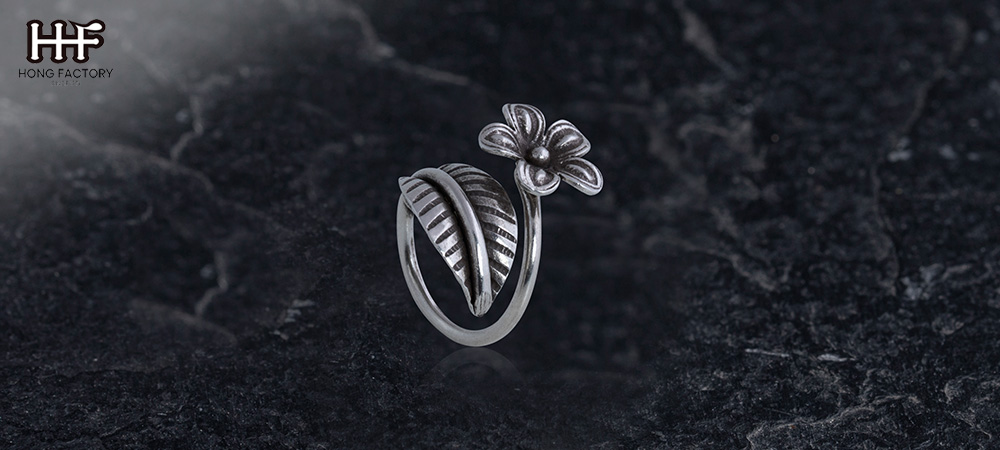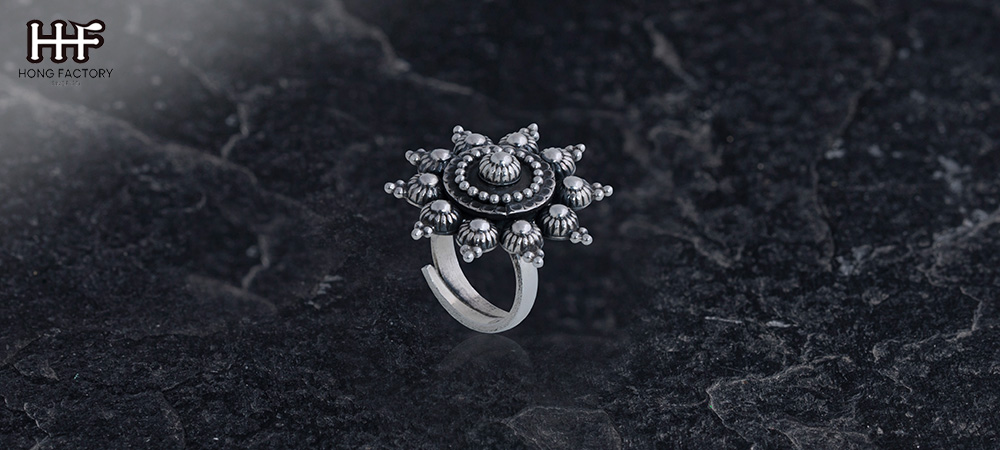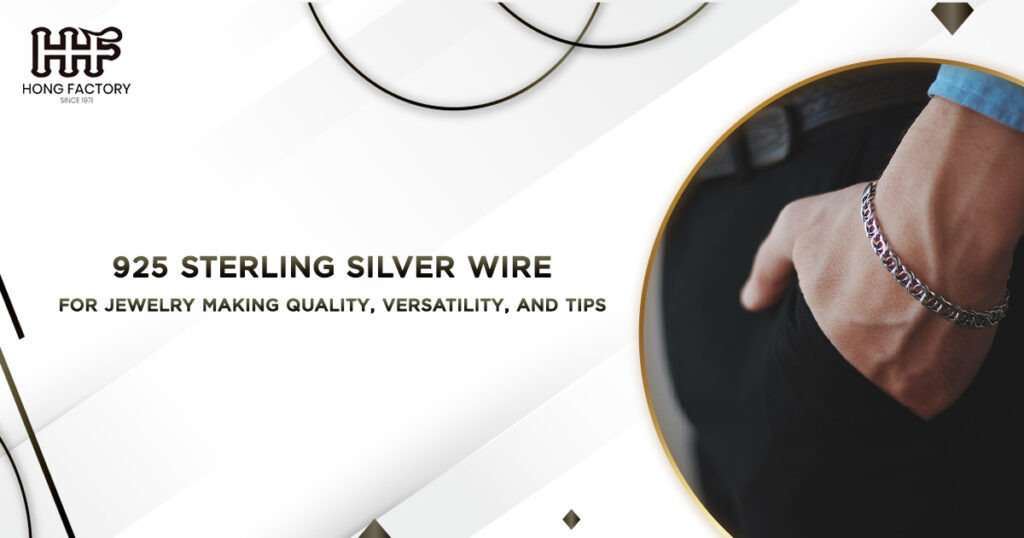When it comes to creating beautiful, high-quality jewelry, the choice of materials is crucial. One of the most popular and versatile options for jewelry makers is 925 sterling silver wire. This article will explore the benefits of using 925 sterling silver wire for jewelry making, its various applications, and tips for working with this exceptional material.
What is 925 Sterling Silver Wire?
925 sterling silver is an alloy composed of 92.5% pure silver and 7.5% other metals, typically copper. The addition of copper increases the durability and strength of the silver, making it more suitable for crafting jewelry that can withstand daily wear. Sterling silver wire is available in various gauges (thicknesses) and shapes, such as round, half-round, and square, to suit different design requirements.
Types of 925 Sterling Silver Wire
Sterling silver wire is a popular choice for jewelry making and other crafts due to its durability, malleability, and attractive appearance. “925” sterling silver means that the metal is composed of 92.5% pure silver and 7.5% other metals, typically copper, which enhances its strength. There are various types of sterling silver wire available, each suited to different applications. Here are some common types :

1. Wire Shapes
Round Wire
- Description : The most common shape used in jewelry making.
- Uses : Ideal for creating jump rings, ear wires, and wrapped loops.
Half-Round Wire
- Description : One side is flat, and the other is rounded.
- Uses : Often used for making rings and bracelets, especially for wrapping around other wires.
Square Wire
- Description : Has four flat sides.
- Uses : Provides a modern look and is often used in wire weaving or for creating geometric designs.
Twisted Wire
- Description : Created by twisting round or square wires together.
- Uses : Adds texture and visual interest to jewelry pieces.
2. Wire Hardness
Dead Soft
- Description : Very pliable and easy to bend.
- Uses : Ideal for intricate wire wrapping and forming shapes without tools.
Half Hard
- Description : Offers some resistance to bending but can still be shaped with tools.
- Uses : Suitable for making components that need to hold their shape, such as clasps and hooks.
Full Hard
- Description : Very stiff and holds its shape well.
- Uses : Best for structural components that require strength, like rings or cuff bracelets.
Wire Gauges
Wire gauge refers to the thickness of the wire. Common gauges used in jewelry making range from 10 (thick) to 30 (thin). The choice of gauge depends on the specific application :
- Thick Gauges (10-16) : Used for structural elements like bangles and heavy-duty components.
- Medium Gauges (18-22) : Versatile; suitable for making jump rings, ear wires, and general wirework.
- Thin Gauges (24-30) : Best for delicate work such as fine wire wrapping or creating intricate designs.
4. Specialty Wires
Argentium Silver Wire
- Description : A type of sterling silver that contains germanium, making it more tarnish-resistant than traditional sterling silver.
- Uses : Preferred by jewelers who want low-maintenance pieces with a bright finish.
Patterned Wire
- Description : Features pre-made patterns or textures.
- Uses : Adds decorative elements without additional work.
When selecting sterling silver wire for your project, consider the specific needs of your design in terms of shape, hardness, gauge, and any special properties you may require. This will ensure that you choose the best type of wire for your creative endeavors.
Advantages of Using 925 Sterling Silver Wire for Jewelry Making
- Durability: The copper content in 925 sterling silver wire enhances its strength, making it less prone to bending, breaking, or tarnishing compared to pure silver.
- Versatility: Sterling silver wire is suitable for a wide range of jewelry-making techniques, including wire wrapping, wire weaving, chain maille, and more.
- Affordability: Compared to other precious metals like gold or platinum, sterling silver wire is more affordable, allowing jewelry makers to create stunning pieces without breaking the bank.
- Hypoallergenic: Sterling silver is hypoallergenic, making it an excellent choice for people with sensitive skin or allergies to certain metals.
Applications of 925 Sterling Silver Wire in Jewelry Making
Wire Wrapping
Wire wrapping is a popular technique that involves using sterling silver wire to create intricate designs and secure gemstones or beads. This technique allows for endless creativity and customization, resulting in one-of-a-kind pieces.
Tips for Wire Wrapping with 925 Sterling Silver Wire
- Choose the appropriate gauge wire for your project. Thicker gauges (lower numbers) are better for structural elements, while thinner gauges (higher numbers) are ideal for delicate details.
- Use high-quality tools, such as pliers and cutters, to ensure precise bends and clean cuts.
- Practice proper tension control to create secure wraps without damaging the wire or gemstones.
Chain Maille
Chain maille involves linking together jump rings made from sterling silver wire to create intricate patterns and designs. This ancient technique has been adapted for modern jewelry making, resulting in stunning bracelets, necklaces, and earrings.

Tips for Creating Chain Maille with 925 Sterling Silver Wire
- Ensure that your jump rings are consistently sized and properly closed to maintain the integrity of the design.
- Experiment with different weaves and patterns to create unique pieces.
- Use a jump ring opener to avoid twisting or distorting the rings while working.
Wire Weaving
Wire weaving is a technique that involves creating intricate patterns by weaving together multiple strands of sterling silver wire. This method can be used to create beautiful pendants, earrings, and bracelets with a woven texture.
Tips for Wire Weaving with 925 Sterling Silver Wire
- Choose wires of different gauges to create depth and dimension in your designs.
- Use a wire jig or template to ensure consistent and symmetrical patterns.
- Experiment with different weaving patterns, such as Viking knit or Soumak weave, to create unique textures.
Caring for 925 Sterling Silver Wire Jewelry
To maintain the beauty and longevity of your sterling silver wire jewelry, it is essential to properly care for it.
Storage
Store your sterling silver wire jewelry in a cool, dry place, away from direct sunlight and moisture. Use a soft, lint-free cloth or a dedicated jewelry box with compartments to prevent pieces from scratching each other.
Cleaning
Clean your sterling silver wire jewelry regularly to remove dirt, oils, and tarnish. Use a polishing cloth specifically designed for sterling silver, or gently wash the pieces in warm, soapy water and dry them thoroughly with a soft cloth.
Avoiding Exposure
To minimize tarnishing, remove your sterling silver wire jewelry before swimming, exercising, or using household chemicals. Avoid exposing the jewelry to perfumes, hairsprays, or other beauty products that may contain harsh chemicals.
Conclusion
925 sterling silver wire is an exceptional material for jewelry making, offering durability, versatility, and affordability. By mastering techniques like wire wrapping, chain maille, and wire weaving, jewelry makers can create stunning, one-of-a-kind pieces that showcase the beauty of sterling silver. With proper care and storage, your sterling silver wire jewelry will remain beautiful for years to come.
When working with 925 sterling silver wire for jewelry making, remember to choose the appropriate gauge for your project, use high-quality tools, and practice proper technique. Don’t be afraid to experiment with different designs and patterns to create unique, eye-catching pieces that reflect your personal style.
Investing in 925 sterling silver wire for your jewelry-making projects ensures that you are working with a high-quality, versatile material that will help you create beautiful, lasting pieces. Whether you are a beginner or an experienced jewelry maker, sterling silver wire is an excellent choice for crafting elegant, timeless jewelry that will be cherished for generations.

